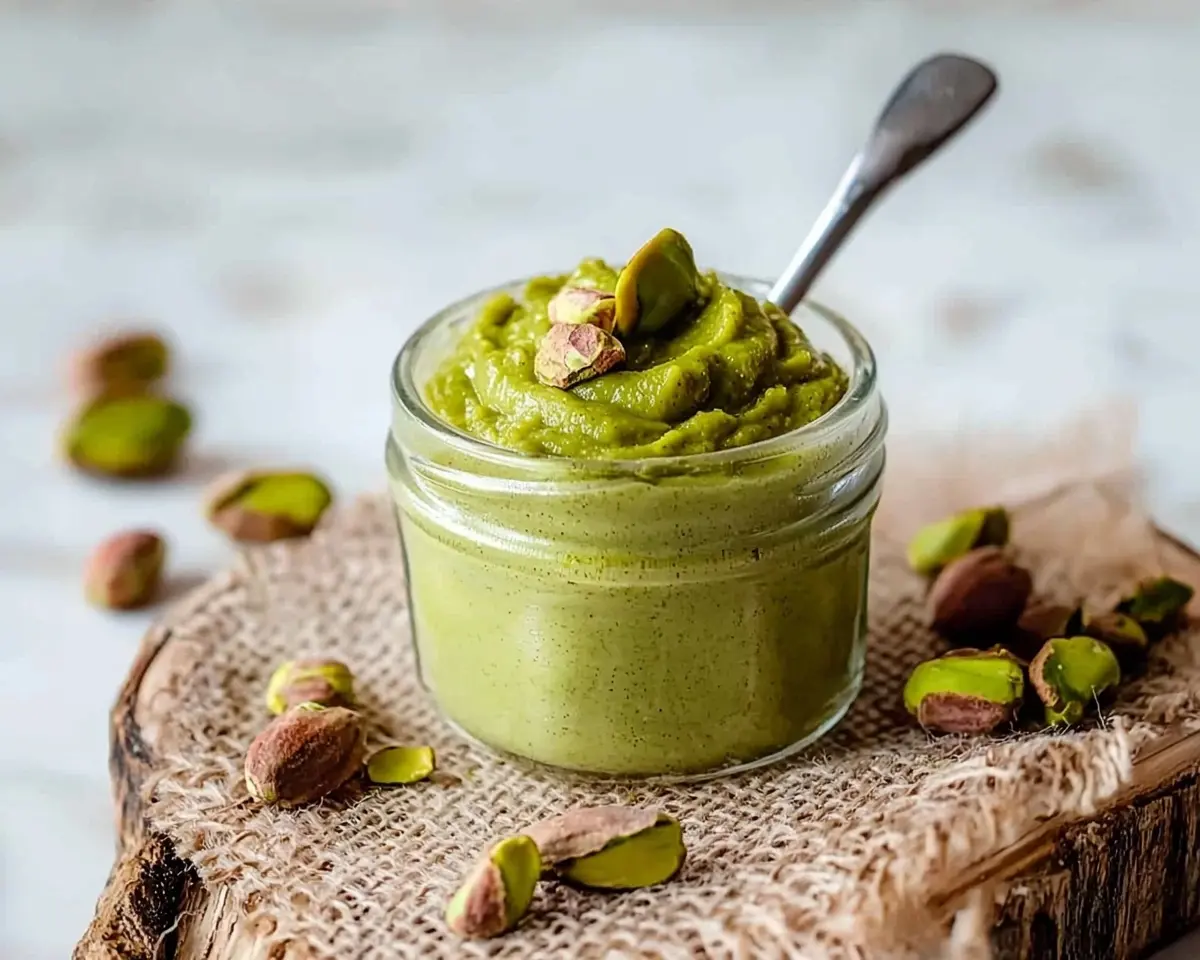Pistachio paste recipe with step-by-step guide. Learn how to make silky smooth pistachio paste at home using simple techniques and tips.
Hi, I’m Linda, and welcome to Tasty at Home—where bold flavors meet everyday kitchens. Last spring, I stumbled upon a tiny Italian bakery in Boston’s North End, where the owner handed me a spoonful of the most incredible pistachio paste I’d ever tasted. One bite transported me to Sicily, with its vibrant green color and luxurious, nutty richness. Well, I knew I had to recreate that magic at home.
After countless kitchen experiments—and yes, I’ll admit I burned through three food processor motors learning the hard way—I’ve cracked the code for perfect homemade pistachio paste. Whether you’re planning to elevate your holiday baking or simply want to add gourmet flair to your desserts, this recipe delivers restaurant-quality results every single time.
Let me tell you, once you master this technique, you’ll never look at store-bought nut butters the same way again. This pistachio paste transforms ordinary treats into extraordinary culinary experiences that’ll have your family begging for more.
Table of Contents
Why This Pistachio Paste Recipe Works
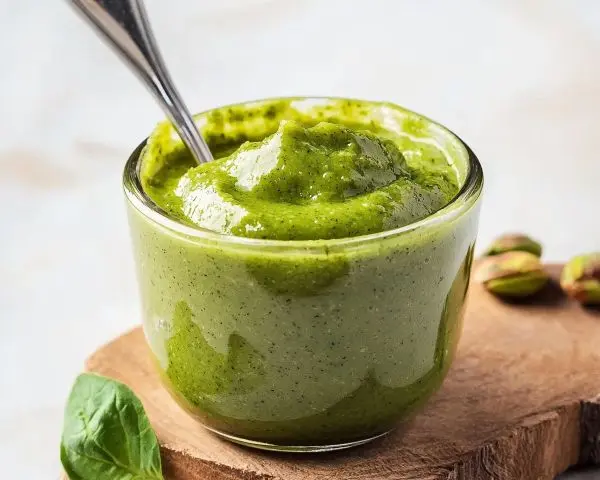
Creating authentic pistachio paste requires more than just throwing nuts into a blender. This method produces incredibly smooth, vibrant paste that rivals expensive imported versions. Moreover, homemade pistachio paste costs significantly less than premium store-bought alternatives while delivering superior flavor and freshness.
Professional bakers prize pistachio paste for its versatility and intense nutty flavor. Furthermore, this recipe uses a blanching technique that removes bitter skins, resulting in a sweeter, more refined taste. Additionally, the controlled water addition prevents the paste from becoming too thick or separating.
Ingredients for Perfect Pistachio Paste
| Ingredient | Amount | Notes |
|---|---|---|
| Raw shelled pistachios | 1 cup (5 oz) | Choose bright green, unsalted nuts |
| Water | 4-6 tablespoons | Add gradually for smooth consistency |
| Optional: Neutral oil | 1 teaspoon | For extra smoothness |
Essential Ingredients
Raw shelled pistachios form the foundation of exceptional pistachio paste. Therefore, select nuts that appear bright green and feel firm to the touch. Avoid pistachios with dark spots or a rancid smell, as these indicate age or improper storage.
Quality Shopping Tips
Visit specialty stores like Whole Foods or Williams Sonoma for premium pistachios. Alternatively, Middle Eastern markets often stock high-quality nuts at competitive prices. Store pistachios in airtight containers in the refrigerator to maintain freshness for up to six months.
Creative Substitutions
International readers can substitute almonds or hazelnuts for different flavor profiles. However, pistachios provide the most authentic taste and gorgeous green color. Additionally, lightly salted pistachios work if you rinse them thoroughly before blanching.
Essential Equipment and Setup
Required Tools
- Large saucepan for blanching
- Fine-mesh strainer
- Food processor (minimum 7-cup capacity)
- Kitchen towels or paper towels
- Rubber spatula for scraping
Alternative Equipment Options
Don’t have a food processor? A high-powered blender like Vitamix works excellently for small batches. Similarly, immersion blenders can create smooth paste, though they require more patience and frequent scraping.
Step-by-Step Instructions
Preparing the Pistachios
Start by examining your pistachios carefully, removing any shells or debris. Next, bring one quart of water to a rolling boil in a large saucepan. This blanching step removes the papery skins that can create bitterness in your finished paste.
Blanching Process
Once the water reaches a vigorous boil, add the pistachios and let them cook for exactly 90 seconds. Timing matters here—longer cooking makes the nuts mushy, while shorter blanching leaves skins difficult to remove. Immediately drain the pistachios and rinse them under cold running water to stop the cooking process.
Skin Removal Technique
Line a large baking sheet with clean kitchen towels. Spread the blanched pistachios across the towel and gently rub them to loosen the skins. Then, patiently remove individual skins by pinching each nut—this process takes about 20-30 minutes but creates dramatically better paste color and flavor.
Man, oh man, I used to skip this step thinking it didn’t matter. However, after comparing batches with and without skin removal, the difference is remarkable. Skinned pistachios create vibrant green paste, while unskinned nuts produce muddy brown results.
Processing the Paste
Transfer your beautiful green pistachios to the food processor bowl. Process continuously for about one minute until the nuts begin forming a coarse paste. At this point, the mixture will look dry and crumbly—don’t worry, this is completely normal.
Water Addition Strategy
Add one tablespoon of water and process for 30 seconds. Scrape down the sides with a rubber spatula, then repeat this process. Continue adding water gradually until the paste reaches your desired consistency. Most batches require 4-6 tablespoons total, but humidity and nut oil content affect the final amount needed.
You know what separates amateur attempts from professional results? Patience during this water addition phase. Adding too much liquid at once creates runny paste that never achieves proper texture.
Final Processing Steps
Once the paste appears smooth and creamy, process for an additional 30 seconds to ensure uniform texture. Taste and adjust consistency as needed—the paste should spread easily but hold its shape when spooned.
Expert Tips for Success
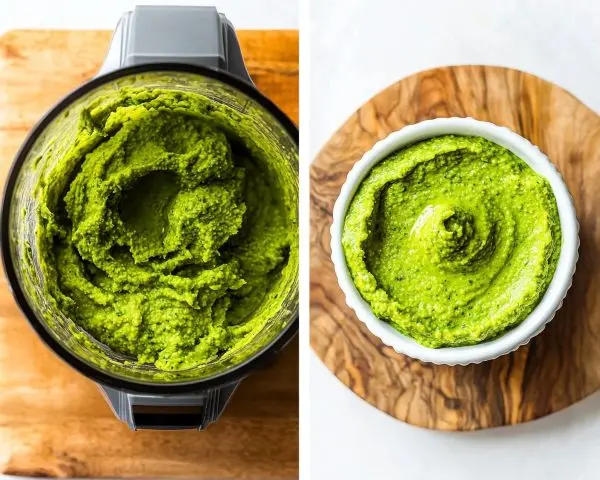
Temperature Control
Process pistachios at room temperature for best results. Cold nuts require more water and longer processing time. Conversely, warm nuts from blanching process more easily but can overheat your food processor motor.
Texture Troubleshooting
If your paste appears grainy, continue processing in 30-second intervals. Sometimes nuts need extra time to break down completely. Additionally, older pistachios may require slightly more water due to lower natural oil content.
Flavor Enhancement
Professional pastry chefs like Thomas Keller often add a pinch of salt to enhance nutty flavors. Similarly, Julia Child recommended tasting frequently during processing to achieve perfect balance.
Creative Variations and Uses
Regional Adaptations
Mediterranean-style pistachio paste includes lemon zest for brightness. Meanwhile, Middle Eastern versions often incorporate rose water for floral notes. American bakers frequently add vanilla extract to complement chocolate desserts.
Dietary Modifications
Vegan bakers can substitute this paste directly for butter in many recipes. Furthermore, keto dieters appreciate pistachio paste’s healthy fat content and minimal carbohydrates. Sugar-free versions work perfectly for diabetic-friendly treats.
Holiday Applications
Christmas cookies benefit from pistachio paste’s festive green color. Similarly, Easter desserts featuring this paste create stunning presentations. Thanksgiving tart fillings gain sophistication with pistachio paste additions.
| Storage Method | Duration | Best For |
|---|---|---|
| Refrigerator | 5 days | Daily use |
| Freezer | 2 months | Long-term storage |
| Pantry | Not recommended | N/A |
Make-Ahead Strategy
Prepare large batches during pistachio season (fall) when nuts are freshest and most affordable. Portion into ice cube trays, freeze solid, then transfer to freezer bags for convenient single-serving portions.
Serving Suggestions and Pairings
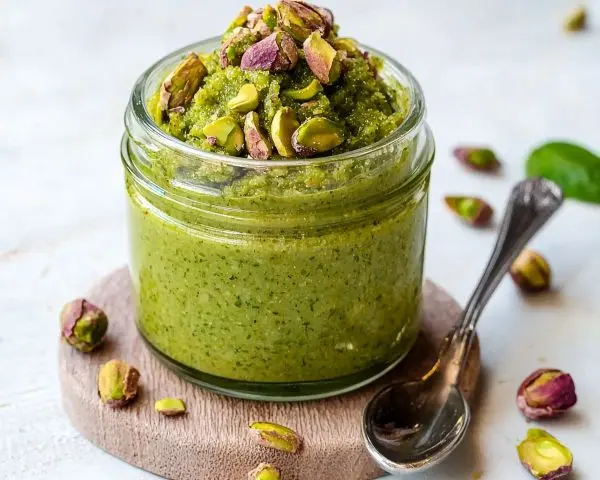
Spread pistachio paste on warm croissants for an elegant breakfast treat. Additionally, swirl it into vanilla ice cream for gourmet desserts. Chocolate lovers should try pairing this paste with dark chocolate ganache—the combination creates incredible flavor depth.
For special occasions, consider incorporating pistachio paste into autumn gin sour cocktails for unique seasonal drinks. Similarly, holiday desserts featuring this paste complement spooky frankenstein pudding cups perfectly.
Pistachio Paste FAQs
How do you make pistachio paste?
Making pistachio paste involves blanching raw pistachios, removing skins, then processing with minimal water until smooth. The key is patience during processing and gradual water addition for perfect consistency.
How to make a pistachio spread at home?
Creating pistachio spread at home requires high-quality raw pistachios, a food processor, and careful attention to texture. Blanching removes bitter skins while processing creates the smooth, spreadable consistency.
How to get pistachio paste?
Getting pistachio paste is simple—either purchase expensive imported versions or make superior homemade paste using this foolproof recipe. Homemade versions cost less and taste fresher than store-bought alternatives.
What does pistachio paste contain?
Pistachio paste contains primarily pistachios and minimal water for consistency. High-quality versions avoid additives, preservatives, or excessive oils that compromise flavor and nutritional benefits.
Conclusion
This ultimate pistachio paste recipe transforms humble nuts into luxurious culinary gold. After perfecting this technique through countless kitchen experiments, I can confidently say this method produces results that rival expensive imported versions.
Consider serving your homemade pistachio paste alongside cracker barrel cheesy hash brown for an unexpectedly delightful brunch combination. The rich, nutty paste balances beautifully with savory breakfast dishes.
Share your pistachio paste creations on social media—I love seeing how home cooks adapt this recipe for their favorite desserts. Whether you’re preparing for holiday baking or simply treating yourself to gourmet indulgence, this paste elevates every recipe it touches.
Remember, mastering homemade pistachio paste opens endless culinary possibilities. From sophisticated tart fillings to simple toast toppings, you’ve now unlocked the secret to restaurant-quality flavor in your own kitchen.
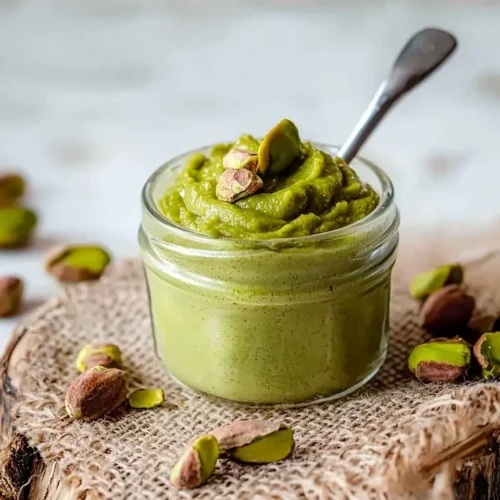
Ultimate Pistachio Paste
Equipment
- Large saucepan
- Fine-mesh strainer
- Food processor
- Kitchen towels
- Rubber spatula
Ingredients
Pistachio Paste
- 1 cup (5 oz) Raw shelled pistachios Choose bright green, unsalted nuts
- 4-6 tablespoons Water Add gradually for smooth consistency
- 1 teaspoon Neutral oil Optional, for extra smoothness
Instructions
- Bring a large saucepan of water to a boil and add pistachios. Blanch for 90 seconds, then drain and rinse under cold water.
- Spread pistachios on a towel and rub to loosen skins. Remove remaining skins by hand for best color and flavor.
- Transfer skinned pistachios to a food processor. Process until crumbly, then begin adding water one tablespoon at a time, blending after each addition.
- Scrape down the sides and continue processing until the mixture becomes smooth and creamy.
- Adjust consistency with a little more water or optional neutral oil. Store in refrigerator for up to 5 days or freeze for longer storage.

